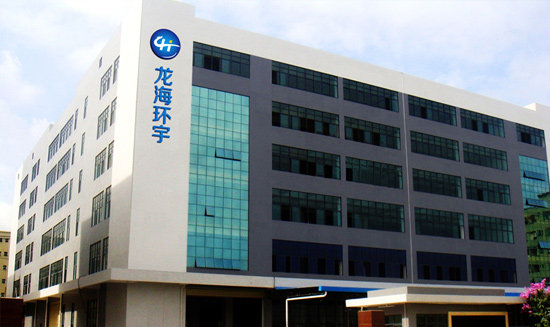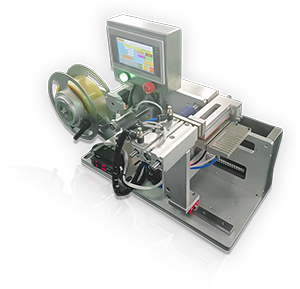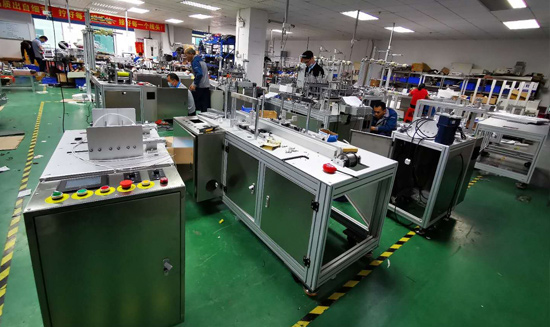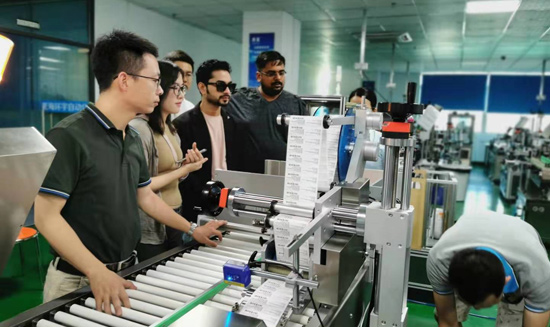关于我们
工业视觉系统图像质量评价体系构建与新突破--在视觉贴标机中的实践
Time:2025-05-26
Page views: 1228次
在智能制造加速渗透的今天,贴标机视觉系统的图像质量已成为决定产线效能与产品质量的核心要素。据《2024全球工业视觉白皮书》数据显示,因图像质量问题导致的标签贴装不良率高达3.8%,每年造成全球制造业损失超120亿美元。本文从技术标准、行业适配、检测方法三大维度,深度解析图像质量评价体系的科学构建路径与落地实践方案。
一、构建科学评价体系的四大核心维度
图像质量评价需围绕分辨率、对比度、噪点控制、色彩还原度四大指标建立量化标准,形成可执行的检测闭环。
1. 分辨率:精度的物理边界
- 国际标准:采用ISO 12233线对测试卡,通过可辨线对密度(lp/mm)量化分辨率
-
行业差异:
- 食品包装:≥2 lp/mm(检测0.5mm生产日期喷码)
- 电子元件:≥5 lp/mm(识别0.2mm微型二维码)
- 技术平衡:500万像素相机虽可捕捉微米级偏移,但需搭配GPU加速(如NVIDIA Jetson Orin)以降低15%处理延迟
2. 对比度:细节捕捉的关键
- 量化方法:灰度阶梯测试板计算动态范围(DR=20·log10(亮度极值比))
- 光源方案:
- 创新方案:偏振光技术使透明标签DR提升至75dB,解决90%反光干扰问题
3. 噪点控制:稳定性的保障
-
双维度管理:
- 随机噪声:暗场图像计算信噪比(SNR≥40dB)
- 固定噪声:平场校正技术消除CMOS像素偏差
- 医药行业案例:双采样降噪技术使铝箔包装检测SNR达45dB,误检率降至0.01%
4. 色彩还原:品质的视觉防线
- 量化标准:X-Rite色卡ΔE2000色差值(化妆品ΔE≤1.5,工业标签ΔE≤2)
- 技术突破:多光谱成像系统破解同色异谱效应,色彩还原准确率提升40%
二、行业应用场景解析与标准适配
不同行业需根据产线特性动态调整评价参数,构建定制化解决方案。
1. 食品饮料行业:速度与精度的平衡
- 核心需求:高速灌装线(≥30fps)下的喷码完整性检测
-
参数配置:
- 200万像素相机+630nm红光光源(增强黑色油墨对比度)
- HDR成像技术解决金属标签过曝问题
2. 医药包装行业:严苛环境的挑战
-
特殊要求:
- IP67防护等级适配无菌车间
- 紫外荧光检测防伪标签(波长365nm)
- 温控方案:-10℃~50℃宽温CMOS传感器保障低温环境稳定性
3. 电子元件行业:微距世界的突破
-
技术配置:
- 5X远心镜头实现0.02mm微型标签检测
- 压电式自动对焦模块(响应<10ms)补偿景深变化
- 数据验证:二维码对比度≥30%时读取率达99.99%(ISO/IEC 15415标准)
三、检测方法对比与选型策略
基于场景特性选择优算法,实现效率与精度的[敏感词]化。
选型建议:高速产线优先阈值分割,高精度场景选用深度学习,防伪检测必配多光谱系统。
四、技术演进方向与产业升级路径
2025年工业视觉系统呈现三大发展趋势:
- HDR+偏振光融合:解决酒瓶、化妆品等高反光标签检测难题
- 嵌入式AI加速:NPU芯片实现实时质量评价(延迟<2ms)
- 3D视觉普及:线激光扫描检测标签翘曲、起泡等立体缺陷
企业行动建议:
- 建立包含MTF校准模块、标准光源的质量校验平台
- 每季度进行ISO分辨率测试卡校验,确保系统衰减<5%
- 引入数字孪生技术预调试新产线,缩短30%部署周期
结语
图像质量评价体系正从单一参数达标向多模态协同优化跃迁。在电子元件微型化、包装材料多元化的产业背景下,构建动态可调的评价标准与智能检测方案,将成为制造企业突破质量瓶颈、实现降本增效的核心竞争力。













 微信咨询
微信咨询